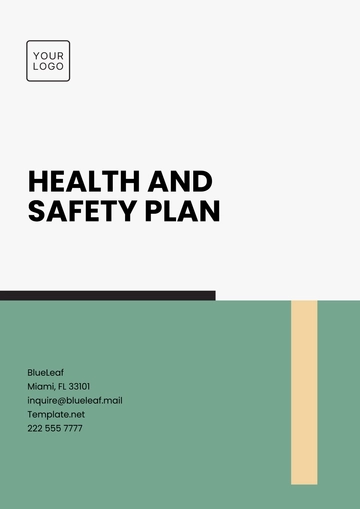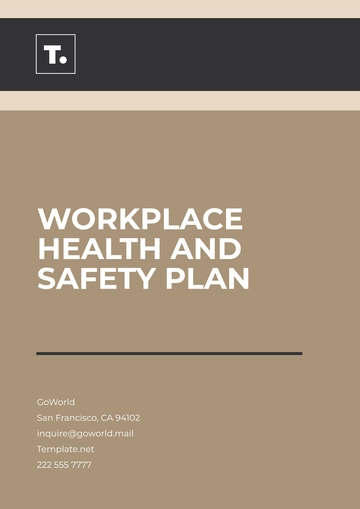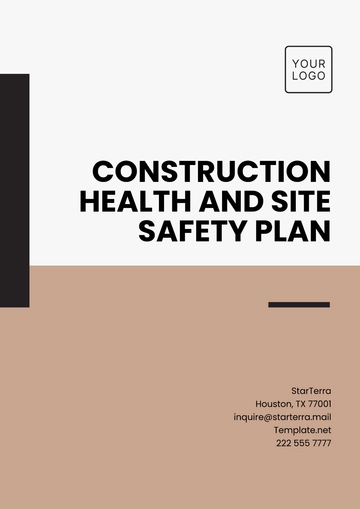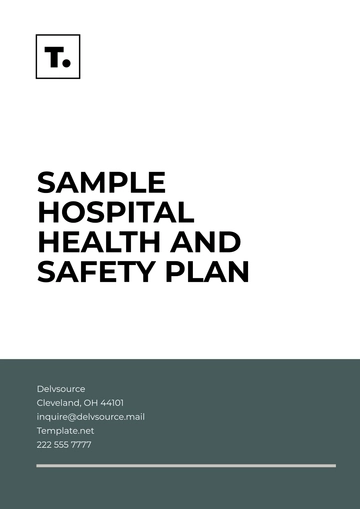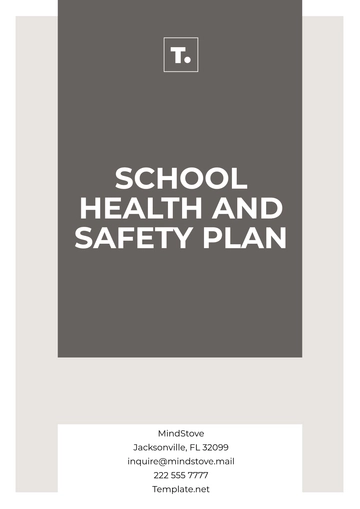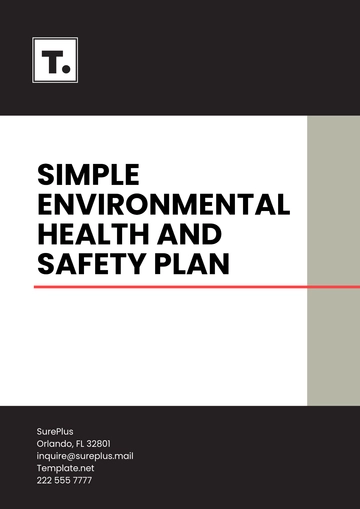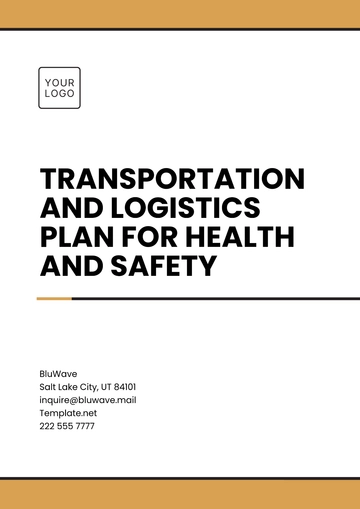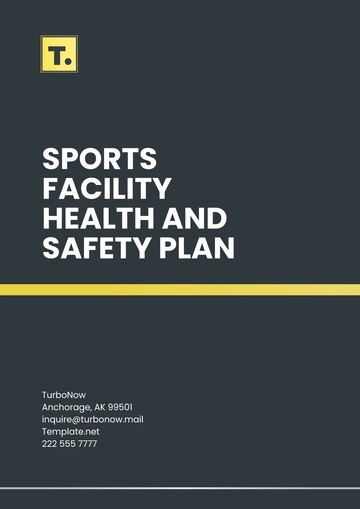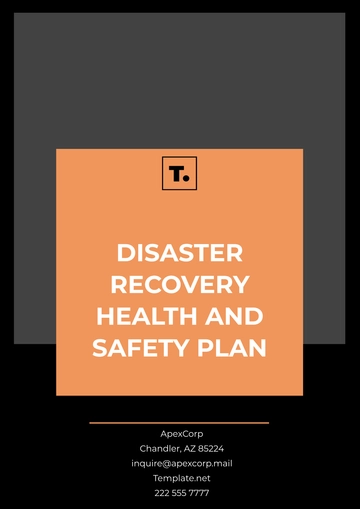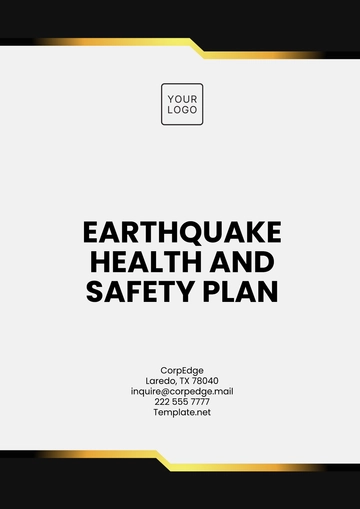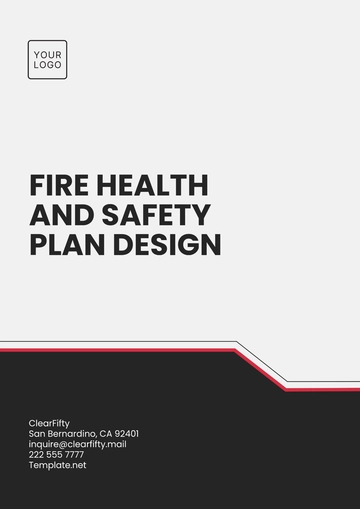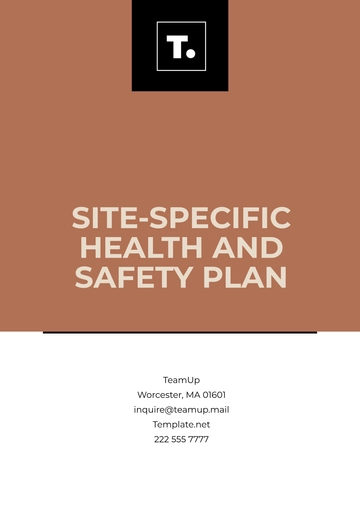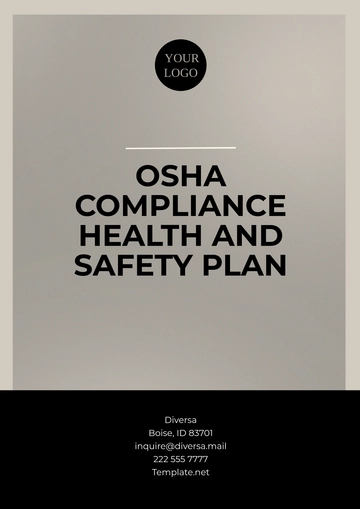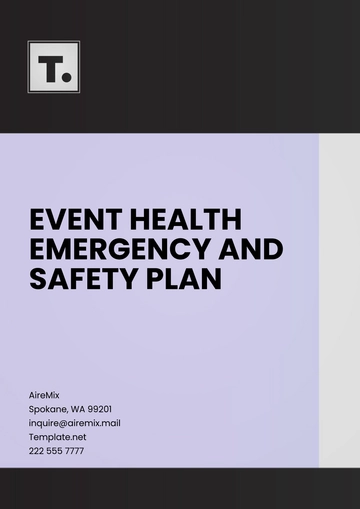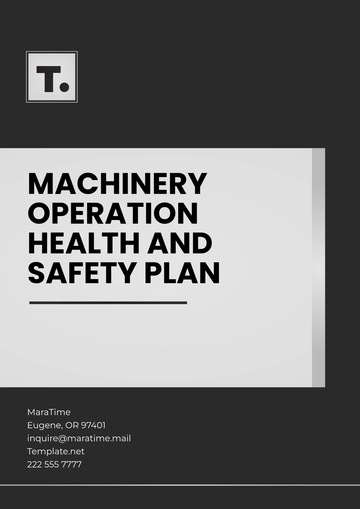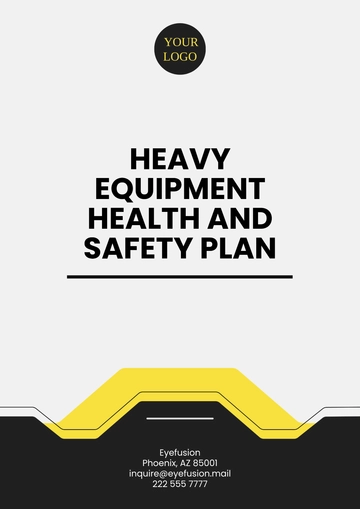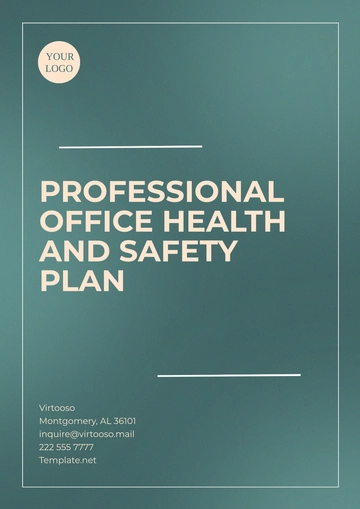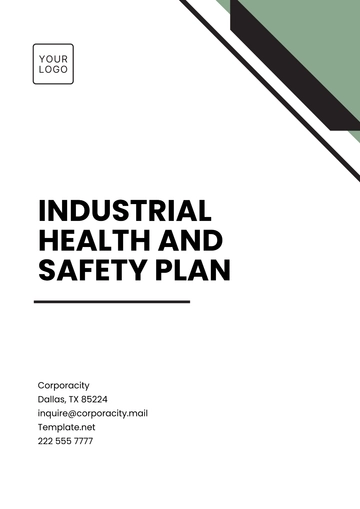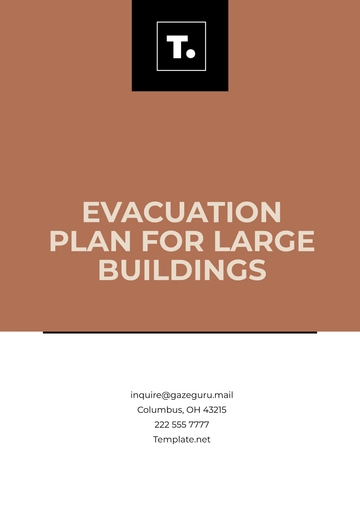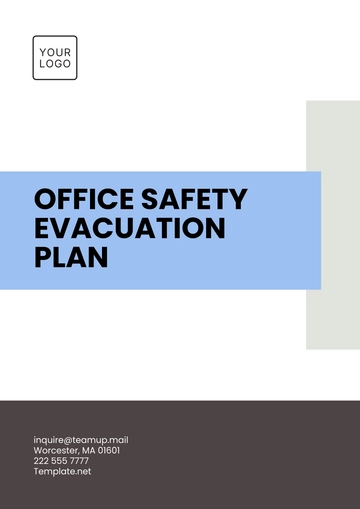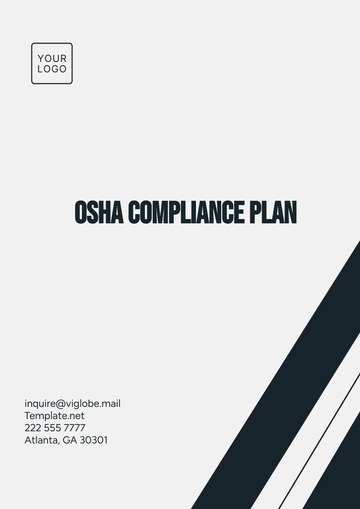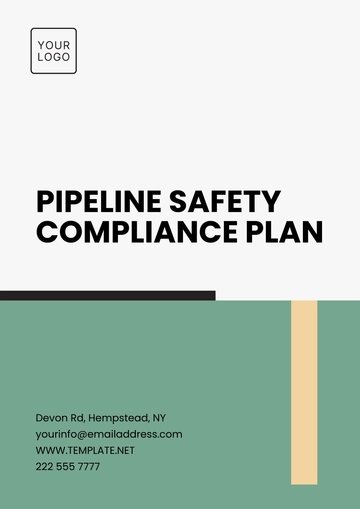Free PPE Lifecycle Management Plan
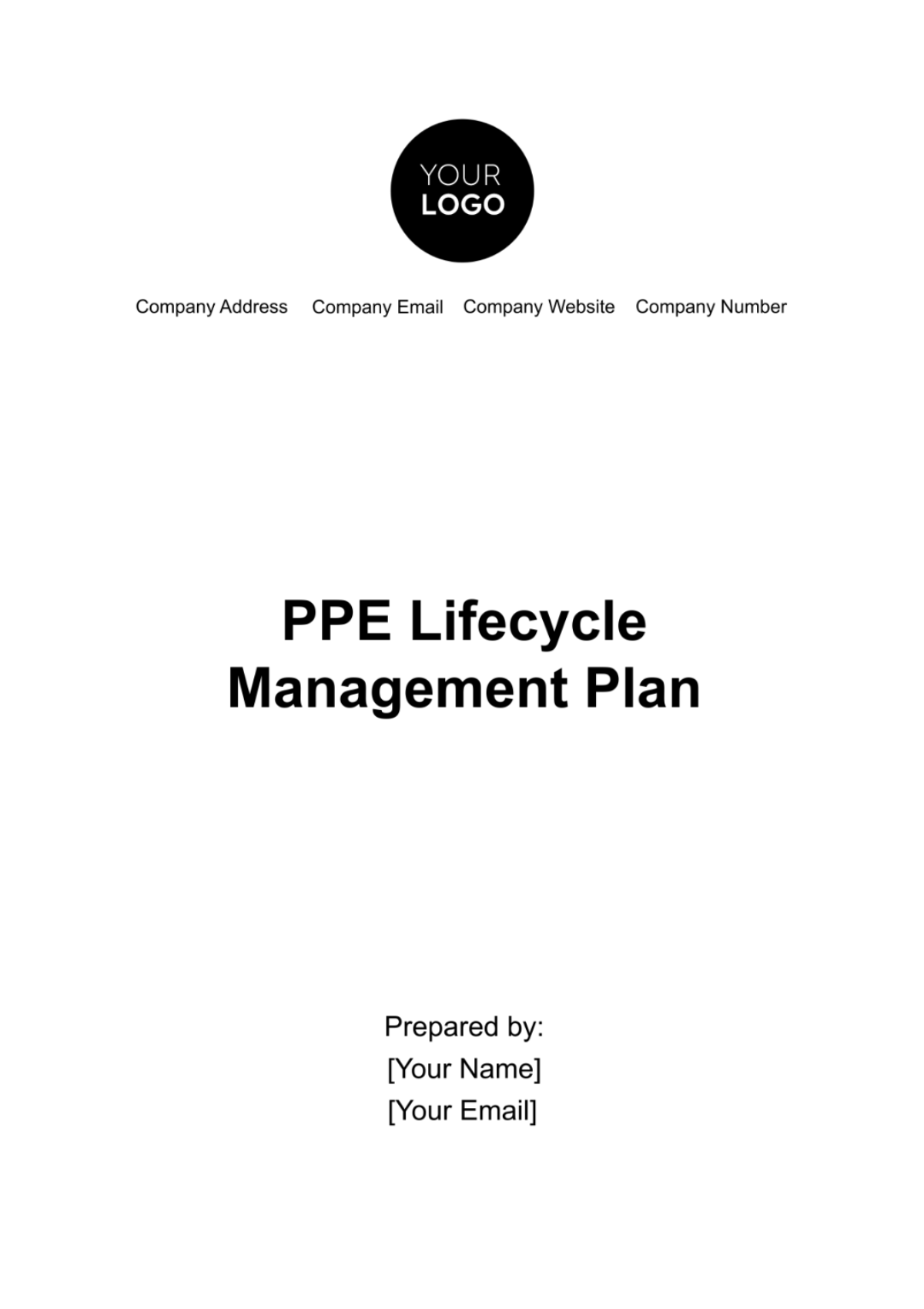
A. Introduction
[Your Company Name] is committed to maintaining a safe and healthy workplace for all employees. As part of this commitment, we have developed this PPE (Personal Protective Equipment) Lifecycle Management Plan to ensure the proper selection, use, maintenance, and disposal of PPE in accordance with US health and safety standards. This plan outlines the responsibilities of employees and supervisors, as well as the procedures for PPE acquisition, training, and compliance. By following this plan, we aim to protect our workforce from workplace hazards and remain in full compliance with applicable regulations.
B. Scope and Purpose
This PPE Lifecycle Management Plan applies comprehensively to [Your Company Name], encompassing all employees and the entire range of Personal Protective Equipment (PPE) utilized within our operations. The plan's primary objective is to guarantee the meticulous selection, correct usage, systematic maintenance, and responsible disposal of PPE. By adhering to this plan, we are dedicated to safeguarding the well-being of our workforce against workplace hazards, while simultaneously upholding strict compliance with US health and safety standards, thus fostering a secure work environment for all.
C. Regulatory Compliance
The use of Personal Protective Equipment (PPE) within our workplace is guided by a set of rigorous US laws and standards established to ensure the safety and well-being of employees. Key regulations and standards include:
Occupational Safety and Health Administration (OSHA): OSHA's 29 CFR 1910.132-138 standards mandate that employers must assess workplace hazards, select appropriate PPE, provide necessary training, and ensure PPE is used correctly.
National Institute for Occupational Safety and Health (NIOSH): NIOSH provides guidelines for respirator selection and use, ensuring that employees are protected from airborne hazards.
American National Standards Institute (ANSI): ANSI standards cover various aspects of PPE, including eye and face protection, head protection, and hearing protection, setting performance requirements and testing procedures.
Environmental Protection Agency (EPA): EPA regulations govern the handling and disposal of hazardous materials, including PPE contaminated with hazardous substances.
State and Local Regulations: Depending on your location, state and local regulations may impose additional requirements or standards related to PPE use.
It is imperative that we adhere to these regulations and standards diligently. Failure to comply not only jeopardizes the safety of our employees but can also result in substantial fines and legal consequences. Therefore, this PPE Lifecycle Management Plan is designed to ensure strict compliance with all applicable laws and standards, safeguarding both our workforce and our legal standing.
D. Responsibilities
This section outlines the essential roles and responsibilities of various stakeholders within [Your Company Name] concerning the management of Personal Protective Equipment (PPE). Clear delineation of these responsibilities is vital for ensuring the effectiveness of our PPE program, safeguarding employee safety, and adhering to regulatory requirements.
Stakeholder | Responsibilities |
Employees | Properly wear and use assigned PPE. |
Participate in PPE training programs. | |
Promptly report damaged or malfunctioning PPE. | |
Supervisors | Ensure employees use PPE as required. |
Conduct regular PPE inspections. | |
Report and address PPE issues promptly. | |
Management | Provide necessary resources for PPE acquisition and maintenance. |
Support and enforce PPE policies and training. | |
Allocate budget for PPE procurement and replacement. |
E. PPE Selection
The selection of suitable Personal Protective Equipment (PPE) at [Your Company Name] is a meticulous process guided by the identification of workplace hazards and employee requirements.
Hazard Assessment: We conduct comprehensive hazard assessments to identify potential workplace risks, including chemical exposure, physical hazards, and biological threats.
PPE Evaluation: Based on hazard assessment, we determine the specific types of PPE required, such as respirators, gloves, eye protection, or hearing protection.
Employee Consultation: Employees are actively engaged in the selection process, considering their individual needs, comfort, and any special accommodations.
Vendor Evaluation: We assess PPE suppliers to ensure they meet quality and regulatory standards.
Documentation: All PPE selections and reasons for choosing particular equipment are documented, ensuring transparency and compliance with regulations.
This comprehensive approach to PPE selection guarantees that employees are equipped with the most suitable protective gear, minimizing workplace risks and ensuring their safety.
F. Training and Education
At [Your Company Name], we prioritize the safety and well-being of our employees through robust PPE training and education initiatives. These programs are designed to equip employees with the knowledge and skills necessary for proper PPE usage. Key components of our training include:
Interactive Workshops
Online Resources
Regular Updates
Our commitment to education ensures that employees remain well-informed and capable of using PPE effectively to mitigate workplace hazards.
G. PPE Procurement
The acquisition of Personal Protective Equipment (PPE) at [Your Company Name] is a carefully managed process to ensure the highest quality and compliance with US health and safety standards.
Procurement Sources: PPE is sourced from reputable suppliers and manufacturers known for their adherence to safety standards.
Quality Standards: All PPE must meet or exceed relevant ANSI, NIOSH, and OSHA standards for safety and performance.
Purchasing Procedures: Purchases are made following a competitive bidding process, and contracts specify PPE types, quantities, delivery schedules, and quality requirements. Regular supplier evaluations are conducted to maintain quality standards.
H. PPE Inspection and Maintenance
At [Your Company Name], we prioritize the longevity and effectiveness of Personal Protective Equipment (PPE) through a systematic inspection and maintenance regimen:
Regular Inspection: Employees and supervisors conduct pre-use and periodic inspections to identify damage or defects.
Maintenance: Damaged or worn PPE is promptly repaired or replaced. Cleaning and sanitation protocols are adhered to for reusable PPE.
Record-Keeping: Inspection and maintenance records are meticulously maintained, including dates, findings, and actions taken. This record-keeping ensures compliance with regulations and enables the tracking of PPE lifespan and maintenance history, promoting employee safety.
I. PPE Replacement and Upgradation
At [Your Company Name], the replacement and upgrading of Personal Protective Equipment (PPE) are essential components of our safety program.
Replacement Criteria
Damage or Wear: PPE showing signs of damage, wear, or deterioration beyond safe use is immediately replaced.
Expiry: PPE with expiration dates is replaced before or on the expiry date, following manufacturer guidelines.
Technological Advancements: PPE is upgraded when newer technologies or models provide enhanced safety features or comfort.
Process
Employees report damaged or expired PPE.
Supervisors conduct inspections and initiate replacements as needed.
The procurement process is followed for upgrading PPE to newer models, ensuring compliance with safety standards and employee protection.
Regularly reviewing and updating PPE guarantees that employees are continually equipped with the best protection available.
J. PPE Disposal
Disposing of expired or damaged Personal Protective Equipment (PPE) at [Your Company Name] is carried out with strict adherence to both environmental and safety regulations.
Disposal Methods
Non-Hazardous PPE: PPE without hazardous contaminants is disposed of in accordance with standard waste disposal protocols.
Hazardous PPE: PPE contaminated with hazardous substances is treated as hazardous waste and disposed of following EPA and local regulations.
Process
Employees must place damaged or expired PPE in designated disposal containers.
Trained personnel oversee proper disposal, ensuring compliance with all relevant environmental and safety regulations.
Responsible disposal not only mitigates environmental impact but also prevents potential health and safety hazards.
K. Emergency Procedures
In unforeseen circumstances, where Personal Protective Equipment (PPE) may face failure or immediate PPE use becomes necessary, [Your Company Name] places utmost importance on guiding employees through safe and effective actions. These instructions aim to equip individuals with the knowledge and steps to respond swiftly and securely, ensuring their protection and well-being during emergency situations.
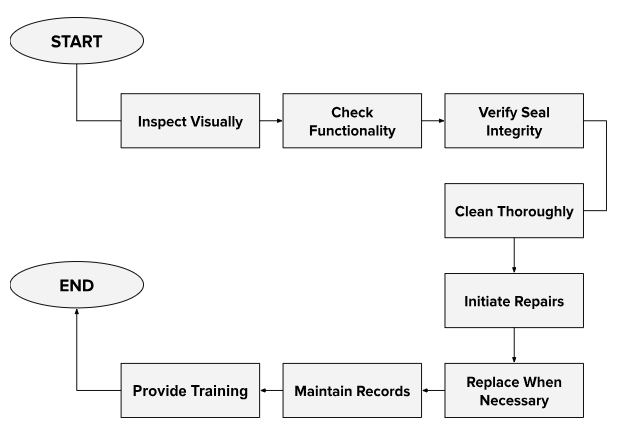
Prioritizing safety and preparedness during emergencies is integral to our commitment to employee well-being.
L. Record-Keeping
Accurate and comprehensive record-keeping is an integral component of [Your Company Name]'s commitment to safety and compliance with US health and safety standards. The maintenance of records related to PPE selection, maintenance, and training is vital for accountability, safety assurance, and regulatory compliance.
Record Maintenance
PPE Selection: Records of PPE selection, including hazard assessments, employee consultations, and vendor evaluations, will be maintained electronically and in hard copy. These records will be securely stored and readily accessible for review.
PPE Maintenance: Inspection, maintenance, and repair records will be documented for each piece of PPE. These records will include dates, findings, actions taken, and personnel responsible.
PPE Training: Training records will include employee names, dates of training, topics covered, and assessment results. These records will be electronically stored for easy retrieval.
Retention Period
PPE Selection Records: Kept for a minimum of five years.
PPE Maintenance Records: Maintained for the lifespan of the respective PPE plus one additional year.
PPE Training Records: Retained for the duration of an employee's tenure plus one year after their departure.
This meticulous record-keeping ensures transparency, accountability, and compliance with regulatory requirements for an extended period, bolstering employee safety and company adherence to standards.
- 100% Customizable, free editor
- Access 1 Million+ Templates, photo’s & graphics
- Download or share as a template
- Click and replace photos, graphics, text, backgrounds
- Resize, crop, AI write & more
- Access advanced editor
Explore Template.net's PPE Lifecycle Management Plan Template, a comprehensive tool for optimizing personal protective equipment management. Effortlessly customize and edit plans with our AI Editor Tool to fit your organization's needs. Enhance PPE efficiency and compliance with this editable and customizable solution, ensuring workplace safety throughout the equipment lifecycle.
You may also like
- Finance Plan
- Construction Plan
- Sales Plan
- Development Plan
- Career Plan
- Budget Plan
- HR Plan
- Education Plan
- Transition Plan
- Work Plan
- Training Plan
- Communication Plan
- Operation Plan
- Health And Safety Plan
- Strategy Plan
- Professional Development Plan
- Advertising Plan
- Risk Management Plan
- Restaurant Plan
- School Plan
- Nursing Home Patient Care Plan
- Nursing Care Plan
- Plan Event
- Startup Plan
- Social Media Plan
- Staffing Plan
- Annual Plan
- Content Plan
- Payment Plan
- Implementation Plan
- Hotel Plan
- Workout Plan
- Accounting Plan
- Campaign Plan
- Essay Plan
- 30 60 90 Day Plan
- Research Plan
- Recruitment Plan
- 90 Day Plan
- Quarterly Plan
- Emergency Plan
- 5 Year Plan
- Gym Plan
- Personal Plan
- IT and Software Plan
- Treatment Plan
- Real Estate Plan
- Law Firm Plan
- Healthcare Plan
- Improvement Plan
- Media Plan
- 5 Year Business Plan
- Learning Plan
- Marketing Campaign Plan
- Travel Agency Plan
- Cleaning Services Plan
- Interior Design Plan
- Performance Plan
- PR Plan
- Birth Plan
- Life Plan
- SEO Plan
- Disaster Recovery Plan
- Continuity Plan
- Launch Plan
- Legal Plan
- Behavior Plan
- Performance Improvement Plan
- Salon Plan
- Security Plan
- Security Management Plan
- Employee Development Plan
- Quality Plan
- Service Improvement Plan
- Growth Plan
- Incident Response Plan
- Basketball Plan
- Emergency Action Plan
- Product Launch Plan
- Spa Plan
- Employee Training Plan
- Data Analysis Plan
- Employee Action Plan
- Territory Plan
- Audit Plan
- Classroom Plan
- Activity Plan
- Parenting Plan
- Care Plan
- Project Execution Plan
- Exercise Plan
- Internship Plan
- Software Development Plan
- Continuous Improvement Plan
- Leave Plan
- 90 Day Sales Plan
- Advertising Agency Plan
- Employee Transition Plan
- Smart Action Plan
- Workplace Safety Plan
- Behavior Change Plan
- Contingency Plan
- Continuity of Operations Plan
- Health Plan
- Quality Control Plan
- Self Plan
- Sports Development Plan
- Change Management Plan
- Ecommerce Plan
- Personal Financial Plan
- Process Improvement Plan
- 30-60-90 Day Sales Plan
- Crisis Management Plan
- Engagement Plan
- Execution Plan
- Pandemic Plan
- Quality Assurance Plan
- Service Continuity Plan
- Agile Project Plan
- Fundraising Plan
- Job Transition Plan
- Asset Maintenance Plan
- Maintenance Plan
- Software Test Plan
- Staff Training and Development Plan
- 3 Year Plan
- Brand Activation Plan
- Release Plan
- Resource Plan
- Risk Mitigation Plan
- Teacher Plan
- 30 60 90 Day Plan for New Manager
- Food Safety Plan
- Food Truck Plan
- Hiring Plan
- Quality Management Plan
- Wellness Plan
- Behavior Intervention Plan
- Bonus Plan
- Investment Plan
- Maternity Leave Plan
- Pandemic Response Plan
- Succession Planning
- Coaching Plan
- Configuration Management Plan
- Remote Work Plan
- Self Care Plan
- Teaching Plan
- 100-Day Plan
- HACCP Plan
- Student Plan
- Sustainability Plan
- 30 60 90 Day Plan for Interview
- Access Plan
- Site Specific Safety Plan
